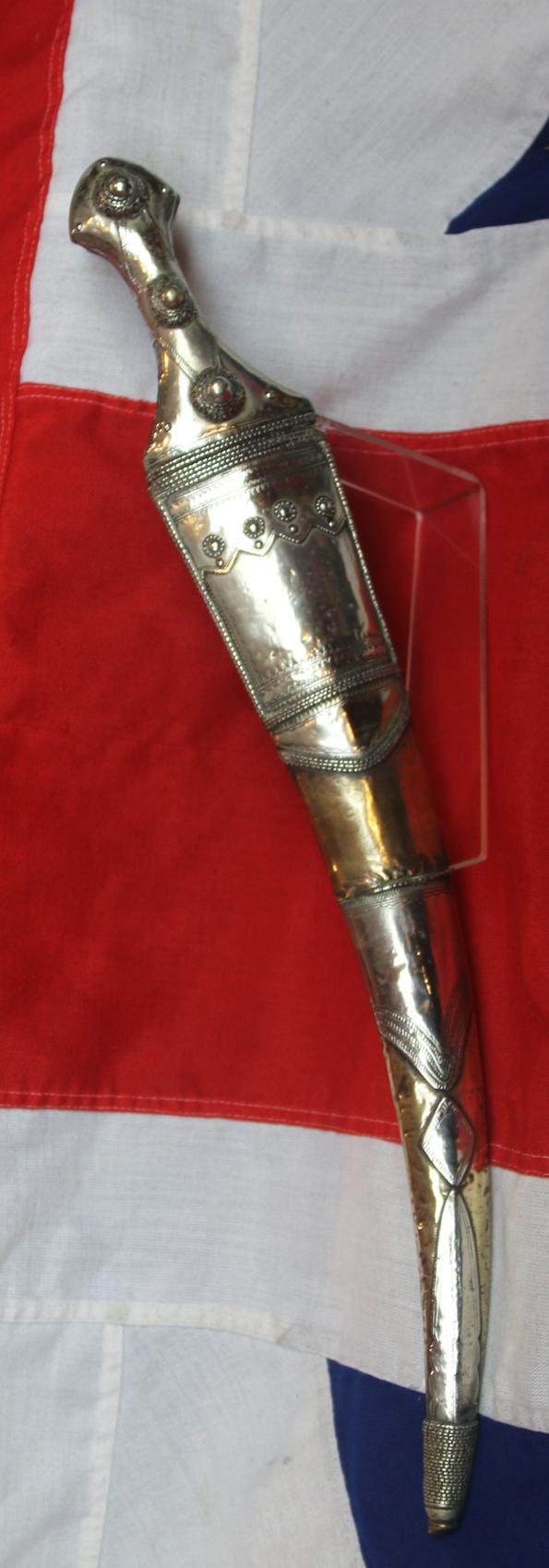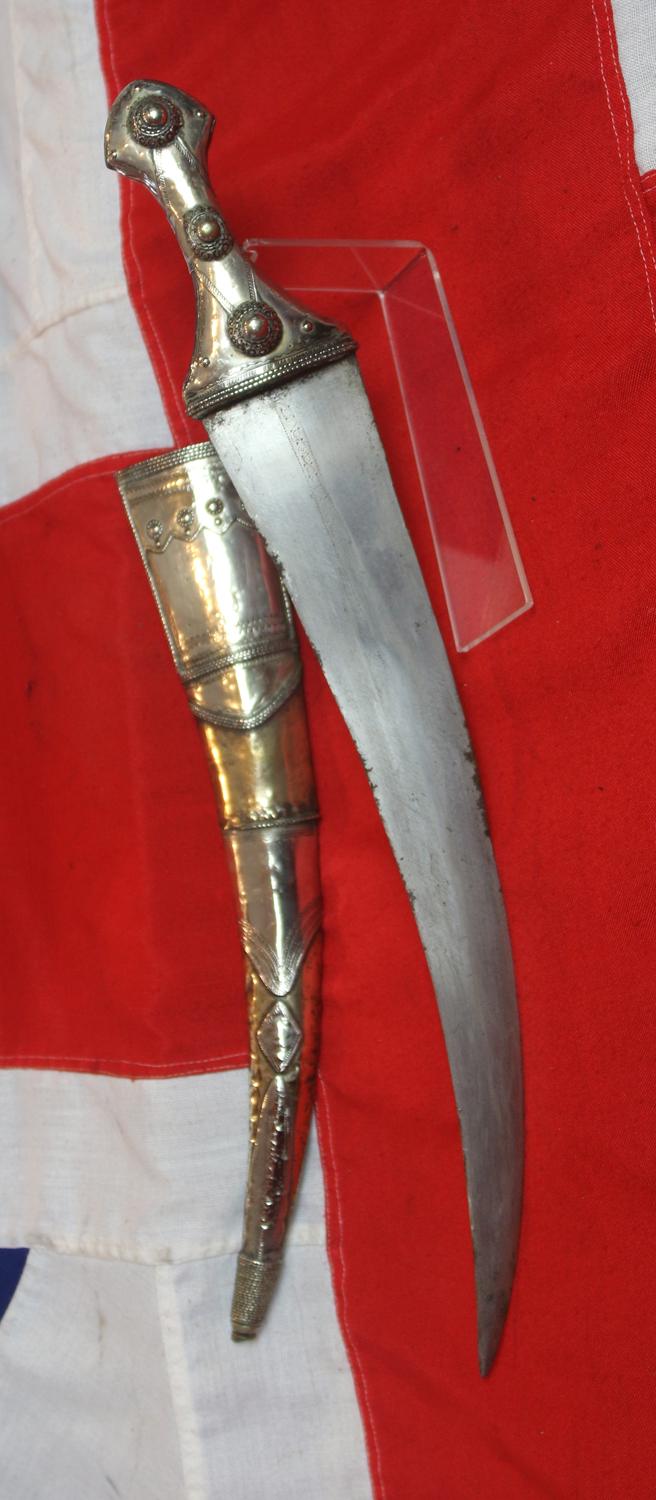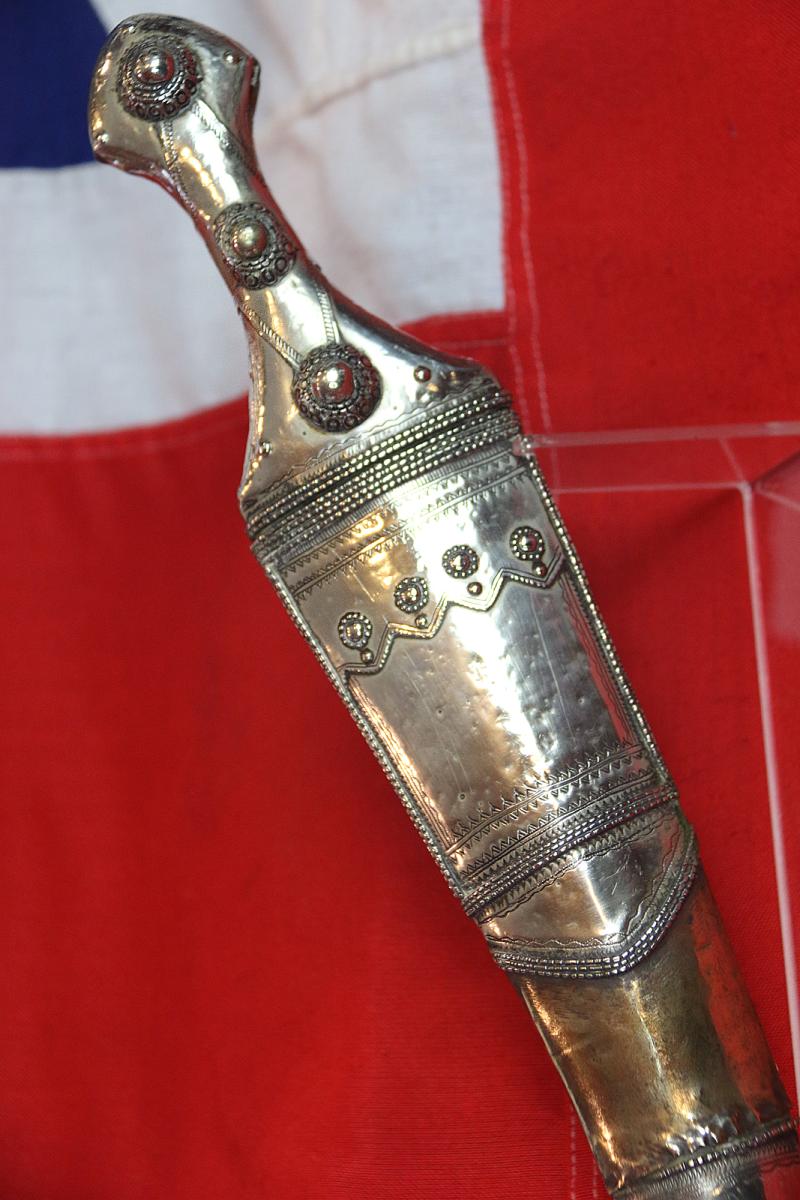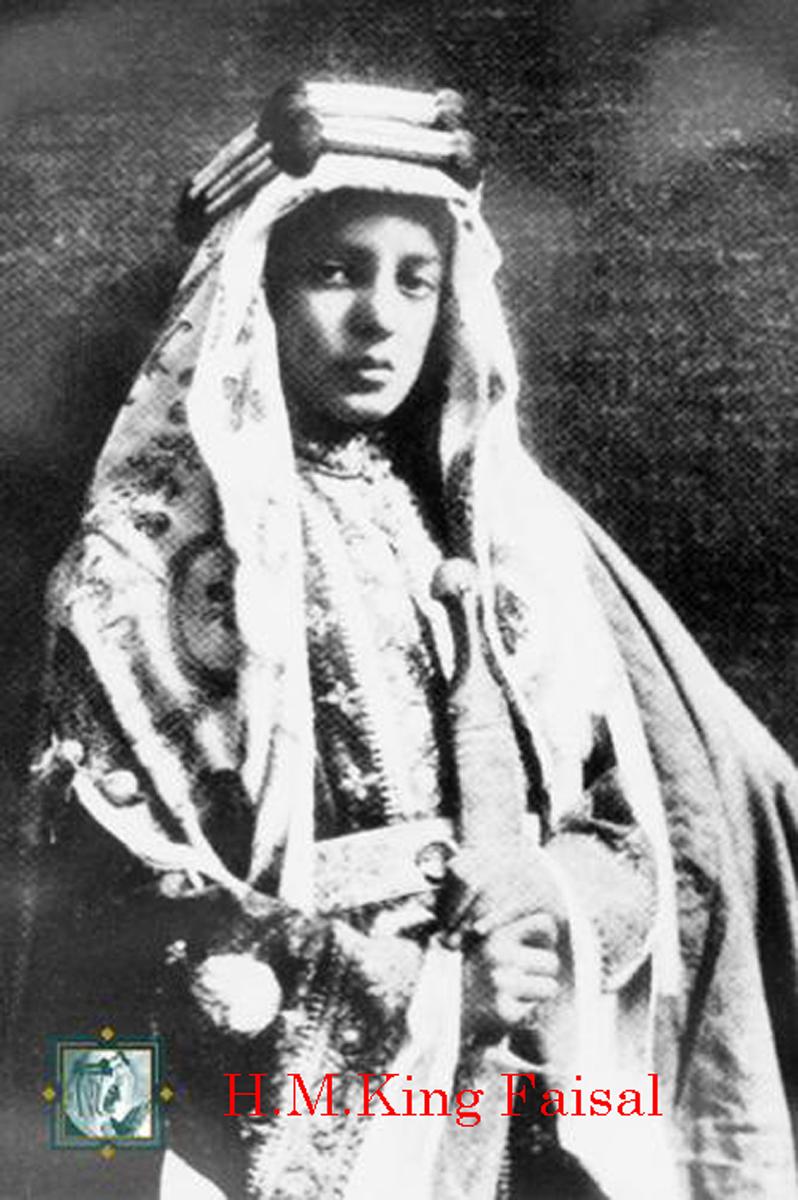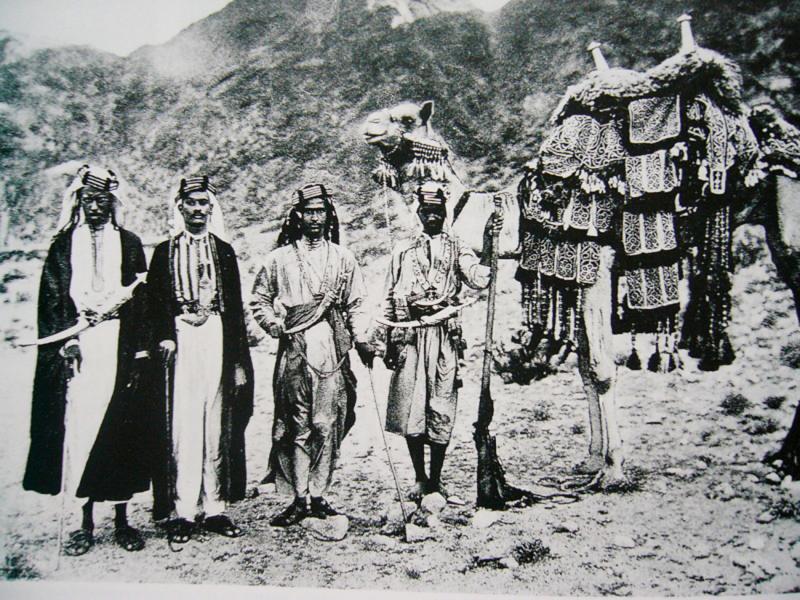A Fine and Long, Saudi Arabian, Silver & Copper Alloy Dharia Jambiya 19th Century
A rare jambiya to find as the smaller Omani and Yemeni types were made in far greater numbers over the past century. A long bladed Dharia jambiya, with shbeyl hilt type, more within the short-sword size, with a flat beyd blade as opposed to the more frequently seen Omani dagger sized pieces. Late 19th century also called in the west a Wahhabi jambiya. With gemstone set scabbard and covered in geometrically patterned silver. A "Wahhabi jambiya" is a occidental collector's term. "Weapons of the Islamic World" by The King Faisal Centre Centre for Research & Islamic Studies categorises these by type, tribal or regional origin, not by religious sect. Obviously jambiyas of this type were carried by Wahhabis and certain of the tribes they are associated with would be predominately Wahhabi. These are from the Asir, Hejaz, Nejd (generally the South, West and Central Saudi Arabia) and were the origins and backbone of the "Ikwhan" which was of course Wahhabi. Dharia is the term used to describe the long dagger which originates from the west of modern day Saudi Arabia, around the Azir/Hijaz area, and down as far as Yemen.
The word Dharia appears to come from the Arabic Dhura'eyah which translates as Arm Long Dagger. These daggers are also called Sabiki, Sabak, Sabik etc depending on the spelling. The term Wahabite is also commonly used to describe these, but any direct connection with the Wahhabi Movement except perhaps the actual geographical area is likely very co-incidental, and perhaps that this style was one used by them.
The jambia was given its name because it is worn on the side of a person – the word jambia is derived from the Arabic word janb (Arabic: جنب, lit. 'side'). A jambia is constituted of a handle, a blade, and a sheath in which the blade is held. It is made of a certain sort of wood, to hold the blade that is fixed to the waist from underneath with an upward curved sheath. The belt that holds the jambia is made of tanned leather, or some thick cloth. There are specialised markets and handicraft markets that decorate it with golden wires.
The jambia handle often tells of the social status of the man who wears it. Jambias can be made with ivory handles or hilts of other rare and exotic materials.
T. E. Lawrence was famous for using a jambiya knife historically.
Overall just over 21.5 inches long.
Code: 24999
1125.00 GBP

